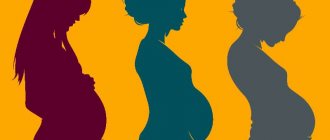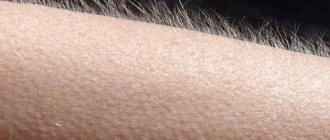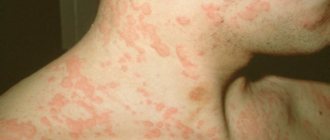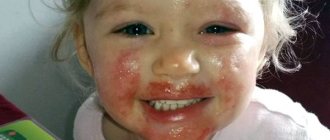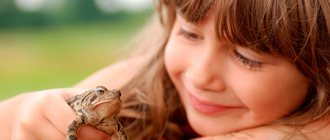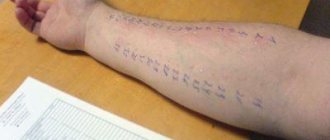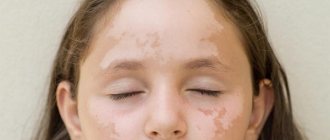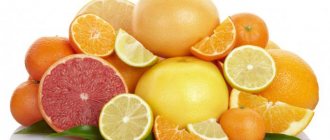Mastocytosis in children is a fairly rare systemic disease. It occurs much more often in children than in adults. It occurs like urticaria in the superficial layers of the skin, leaving marks on the skin in the form of pigment spots. In adults, the disease more often affects internal organs. Mastocytosis is characterized by pathological accumulation (proliferation) of mast cells in tissues, organs, and systems. The lymphatic system, bone marrow, liver, and skin are affected. This disease is not usually inherited.
Mechanism of development of mastocytosis and risk factors
To understand why this disease occurs, it is necessary to understand the purpose of mast cells in the tissues of the human body. These are powerful cells of the immune system involved in all inflammatory processes. Their main function is to protect tissues from inflammation. What happens during proliferation (excessive division)?
The cells are located very close to blood and lymphatic vessels, to the epithelial surfaces of the skin and internal organs, to peripheral nerve endings. Their main function is to protect those organs and tissues where they accumulate. Chemical mediators, released into the tissue, cause hyperplasia, or the onset of tumor formation.
This is why in children with mastocytosis, inflammation of the skin occurs, and then pigment spots remain at the sites of inflammation. This is how urticaria pigmentosa occurs in children.
There are cutaneous and systemic mastocytosis. Children get skin diseases, which can be of the following types:
- Urticaria pigmentosa is the most common form, in which mast cells accumulate on the very surface of the skin, causing a hive-like rash.
- Solitary mastocytoma is a nodular compaction of a round shape with an orange peel effect, without bleeding. It is singular in nature. Occurs on the body, face, limbs.
- Diffuse cutaneous mastocytosis is the rarest disease of this type.
Pediatric mastocytosis
Mastocytosis in children is the second name for urticaria pigmentosa and is similar to the inflammatory process on the skin that occurs with urticaria of allergic origin.
In adults, this disease can affect not only the skin; the disease sometimes spreads to internal organs.
This is systemic mastocytosis, and it usually occurs only in adults.
Children usually develop cutaneous mastocytosis without affecting internal organs. And inflammations on the child’s skin disappear by puberty and no longer torment him.
Most often, doctors diagnose cutaneous mastocytosis in children under two years of age. But older children can also get sick. Doctors explain mastocytosis in children by an overabundance of mast cells.
These are certain white blood cells that contain histamine and a number of other substances that provoke inflammation in the skin. The causes of the disease have not yet been precisely identified; none of the hypotheses can yet be considered accurate.
If a child has a rash on his skin, he should immediately be shown to an allergist or dermatologist in order to accurately diagnose and begin treatment.
Symptoms
Children mainly suffer from cutaneous mastocytosis. The disease can appear in the first year of life, and by adolescence it goes away without a trace. Fortunately, childhood pigmentary mastocytosis tends to heal on its own. You need to know the symptoms in order to be able to distinguish the disease from many others with similar manifestations.
- Urticaria pigmentosa is characterized by the appearance of inflamed, itchy papules on the trunk, face, or extremities. Then, vesicles or blisters appear at the sites of inflammation, which burst over time, leaving behind the blisters colored areas of skin. Over time, pigmentation intensifies, the spots acquire a dark brown color. The rash may appear locally or throughout the body. The manifestations of urticaria pigmentosa are difficult to confuse with other diseases due to the characteristic color of the skin. 90% of babies with mastocytosis suffer from this particular form.
- Solitary mastocytoma is much less common than urticaria pigmentosa. The surface may be smooth or have the appearance of an orange peel due to the formation of small papules. Solitary mastocytomas also tend to resolve without treatment.
- Diffuse mastocytosis is characterized by recognizable skin manifestations. Mast cells turn the entire skin orange. In infancy, blistering rashes may occur. When palpated, the skin has the consistency of dough due to the release of infiltrate from accumulations of mast cells.
Possible complications and consequences
Despite the fact that the prognosis for childhood mastocytosis is favorable - children simply outgrow this disease, this does not mean that it is limited to external signs. There are a number of reasons why you should not take the disease lightly and let it take its course:
- children often suffer from headaches;
- Nosebleeds are common;
- characterized by rapid heartbeat;
- Abdominal pain and occasional vomiting are common;
- Sometimes there is swelling of the throat associated with excess histamine.
Even anaphylactic shock is possible if the child is not treated or seen by an allergist.
Babies should not be taken to the sea; contact with water should be limited to hygienic needs. The skin should be protected from solar radiation.
All these manifestations are observed in a complicated form of the disease. Most children with urticaria pigmentosa are no different from their peers. Over time, they safely enter adulthood without consequences.
Treatment
Treatment of urticaria pigmentosa is always complex, and drug therapy is not of primary importance in creating a favorable prognosis. More important, according to allergists and immunologists, are diet and restrictive measures aimed at maximally eliminating the negative impact of factors that provoke the release of mediators and modulators from mast cells.
Drugs
Since histamine is one of the main modulators of inflammation in urticaria pigmentosa, the basis of symptomatic therapy is histamine receptor blockers (Suprastin, Loratadine, Cetirizine, etc.). Depending on the general clinical picture, the severity of existing symptoms, the age of the patient and concomitant pathologies, the following medications may also be included in the treatment regimen:
- mast cell cell membrane stabilizers with moderate H1-histamine blocking activity (“Ketotifen”);
- cytostatic drugs (“Fluorouracil”, “Cyclophosphamide”);
- agents based on alpha human interferon with immunomodulatory and immunostimulating properties;
- hormonal drugs from the group of glucocorticosteroids (Dexamethasone, Prednisolone).
In most cases, taking antihistamines is sufficient to treat cutaneous mastocytosis. If symptomatic therapy is ineffective and the patient’s condition cannot be stabilized or it worsens, steroid hormones, cytostatics and drugs based on ketotifen are used. To relieve attacks of systemic mastocytosis against the background of anaphylactic reactions, adrenaline injections are used.
In some cases, the patient may be offered stem cell treatment, but the effectiveness of this method for urticaria pigmentosa has not been proven.
Important! Any immunomodulators for autoimmune pathologies can only be taken as prescribed by an immunologist.
Physiotherapy
Physiotherapeutic methods of treating urticaria pigmentosa are suitable only for adult patients, since the only effective method of combating this autoimmune disorder is PUVA therapy. This is a type of ultraviolet irradiation, in which, in addition to the radiation generator, special photoactive amplifiers are used - drugs from the psoralens group.
Medicines can be taken orally or applied directly to the skin in the form of ointments, lotions, or creams. This must be done 2-3 hours before irradiation, after which the patient is placed in a special cabin (sometimes in a bath), in which he remains under UV rays for several minutes. The procedures are carried out with an interval of 48 hours, the course usually consists of 15-20 sessions.
Note! The recommended dose of ultraviolet radiation for the treatment of cutaneous mastocytosis is no more than 1000–1100 J/cm2, with the maximum possible number of sessions being no more than 200 due to the fact that frequent use of psoralens increases the risk of skin cancer by almost 4.5 times.
Diet
All patients suffering from urticaria pigmentosa are prescribed a hypoallergenic diet, excluding products with a large number of chemical additives: flavor enhancers, stabilizers, dyes, flavors, preservatives. The patient should exclude the following dishes and products from the menu as much as possible:
- chocolate and cocoa;
- nuts and legumes (especially peanuts);
- exotic fruits (papaya, mangosteen, rambutan, pineapple, mango, etc.);
- berries that are brightly colored (gooseberries, white currants and cherries are allowed);
- sausages;
- smoked meats;
- pickled and canned vegetables;
- hot spices;
- allergenic products (honey, fish, cow's milk, etc.).
The diet should be based on lean chilled meat, boiled and baked vegetables and yellow and green fruits, fermented milk products, and cereals. Drinks that are useful include weak tea and a decoction of dried fruits.
Restrictive measures
To reduce the risk of exacerbations and maximize the quality of life, patients with cutaneous mastocytosis should know what factors can provoke an inflammatory process on the surface of the skin. The following can cause a skin rash with urticaria pigmentosa:
- tight clothes;
- alcoholic beverages and tobacco smoke;
- poisons of insects and arthropods;
- some medications (iodine, NSAIDs, some analgesics);
- exposure to high temperatures (visiting a bathhouse, sunbathing);
- cosmetics containing various parabens (especially methylparaben).
The impact of all these factors should be minimized and, if possible, completely eliminated.
Cutaneous mastocytosis is a rare and quite dangerous disease, especially if it is diagnosed in a middle-aged person. Despite the fact that the pathology does not require specific treatment, patients with this diagnosis must carefully monitor their diet and lifestyle, since periods of exacerbations can occur against the background of life-threatening conditions (in particular, anaphylaxis) and undergo the necessary immunological tests in a timely manner to correct the status diseases.
Which doctor should I go to and what tests should I take?
If signs of mastocytosis are detected, you should first contact your pediatrician. He will most likely, as with any other skin disease, send you to a dermatologist. The following tests will be performed:
- clinical blood test;
- general blood analysis;
- general urine analysis;
- Abdominal ultrasound to identify systemic lesions;
- histological examination of scrapings to exclude the degeneration of mast cells into cancer cells.
If the disease is widespread only on the skin, symptomatic treatment is prescribed.
How to treat
The causes of this autoimmune disease are still unclear. Treatment of mastocytosis in children depends on the extent of the lesion. Since this disease has many causes, it requires the joint efforts of a pediatrician, family doctor, dermatologist, and allergist. What you cannot do is leave mastocytosis without attention and treatment. There are several folk and pharmacy methods of treatment that are used in combination.
Medicines
Treatment of cutaneous mastocytosis is symptomatic. This means that it is impossible to influence the accumulation of mast cells in the skin and organs. You can only relieve the symptoms.
What drugs are prescribed:
- A group of antihistamines that neutralize excess histamine released by mast cells. The most commonly prescribed drugs are Cetirizine and Levocetirizine.
- For bullous (vesicular) elements of the rash, corticosteroid hormones are prescribed.
- With significant tissue infiltration by mast cells, it is necessary to use cytostatics, which strongly suppress the immune system. Therefore, they are used in cases of extreme necessity.
Traditional methods
For urticaria pigmentosa, traditional methods as an independent form of treatment are unacceptable, and as auxiliary methods they must be agreed with the attending physicians. Any amateur activity here is not only dangerous, but also criminal, because it can lead to serious complications. Still, it is believed that traditional methods can influence symptoms, so let’s consider some of them:
- Take a teaspoon of fragrant celery juice before meals three times a day. The juice must be prepared fresh each time.
- Tinctures of valerian and hawthorn, 15 drops per 100 ml of water before bedtime, soothe itching and promote sound healthy sleep.
- Compresses made from infusions of oak and ivy bark soothe inflammation, alleviating the child’s condition. Pour 200 ml of boiling water over 1 tablespoon of ingredients, cover and let steep for 2 hours. Compresses are applied with warm infusion to the areas affected by the rash.
Physiotherapy
In some cases, doctors consider physical therapy treatment appropriate.
The effect is achieved after 2-3 sessions. The skin stops itching, rashes disappear, and its normal appearance returns.
The most commonly prescribed treatment is PUVA therapy. The operating principle of this method is as follows:
- A drug containing furocoumarins or psoralens is applied to the affected areas.
- After this, the skin is irradiated with long-wave ultraviolet radiation.
- The effect is achieved through a combination of UV and photosensitizer.
- At least 10 sessions are carried out every other day.
Mastocytosis in children can be treated with this method, assessing all the risks of side effects. Nausea, vomiting, dizziness are frequent companions of PUVA therapy sessions.
Diet and lifestyle
In case of mastocytosis, given the tendency to allergic manifestations, you should avoid foods that can cause such a reaction:
- Exclude citrus fruits and all exotic fruits.
- Fatty, fried, smoked foods should be completely excluded from the child’s diet.
- Any sweets for a child are not only not healthy, but simply dangerous.
- Sweet carbonated drinks and store-bought juices are not allowed.
This diet for mastocytosis in children is dictated by the need to avoid any allergies.
Babies should not be taken to the sea; contact with water should be limited to hygienic needs. The skin should be protected from solar radiation.
Traditional methods of treatment
Allows you to reduce the intensity of itching and reduce irritation of the skin. Traditional medicine is a good alternative to chemical antihistamines, which are undesirable to take for more than 2 weeks in a row. It is optimal to alternate anti-inflammatory pharmaceuticals and traditional methods.
Celery juice is fragrant. Celery root is grated and squeezed. Use a dessert spoon daily before each meal.
You can use an infusion; to do this, pour 2 tablespoons of the same roots into a glass of cold water. After 2-3 hours, the infusion is filtered, divided into 3 doses and consumed orally before meals.
How to prevent recurrence of rashes
You will not be able to completely control the situation. Rashes may appear for no apparent reason. But nevertheless, following certain rules will be useful to prevent recurrent rashes:
- Try not to overheat the child; clothing should be light and functional.
- Follow a daily routine - this will protect the child’s nervous system from unnecessary stress.
- Diet and walks in the fresh air also contribute to the overall health of the child’s body.
Mastocytosis requires more than just treatment. You have to learn to live with him until you grow up.
Causes
Scientists and doctors are not entirely clear why mastocytosis develops in children, and the reasons for its appearance are also unknown. At one of the stages of hematopoiesis, a mutation occurs, which leads to an increase in the number of mast cells.
The reasons leading to such a mutation are unknown, but there are several proven predisposing factors:
- hereditary factor;
- exposure to sunlight;
- excessive overheating or hypothermia;
- stress;
- taking certain medications;
- taking certain foods.
